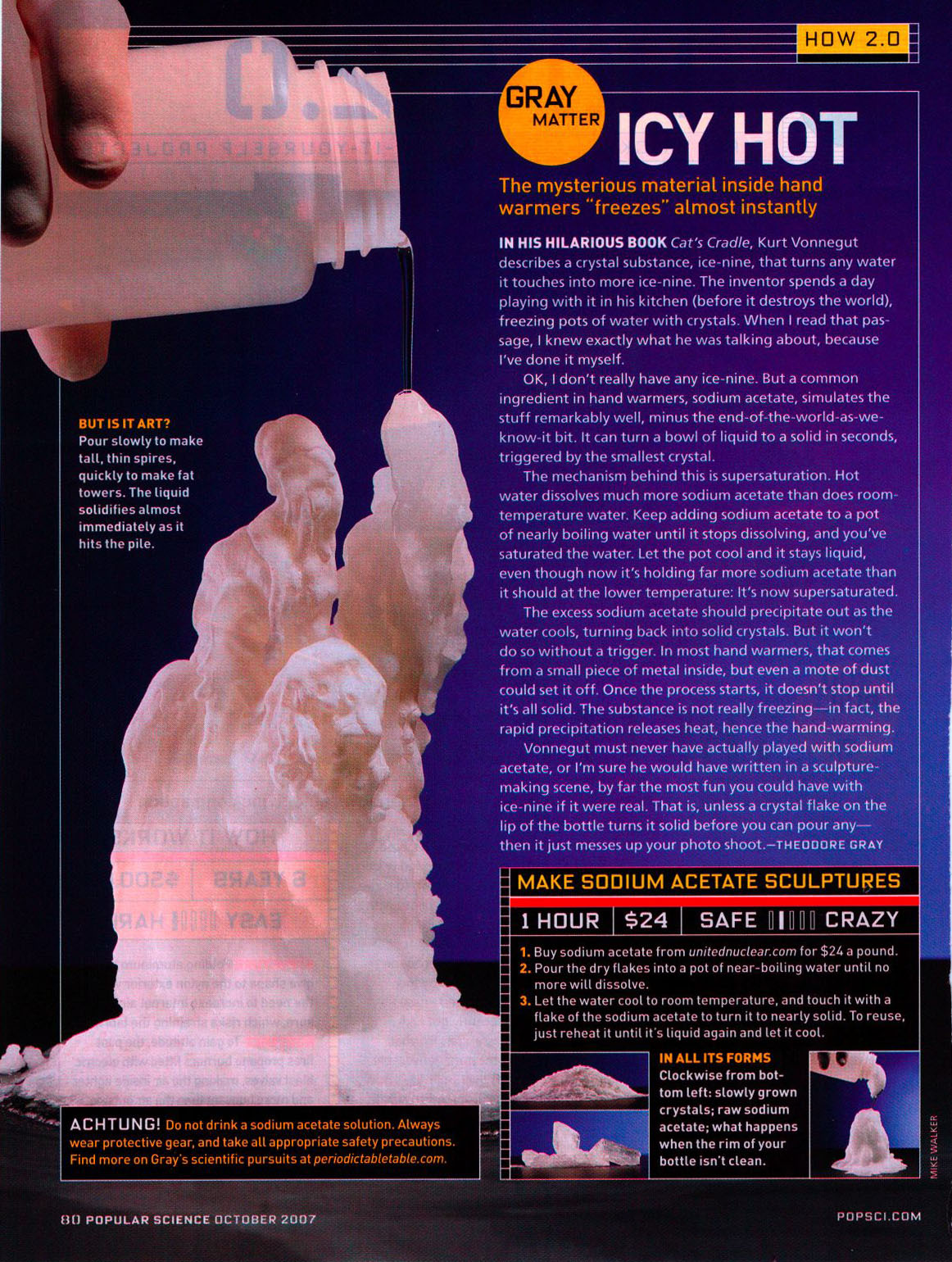In his hilarious book Cat's Cradle, Kurt Vonnegut describes a crystal substance, ice-nine, that turns any water it touches into more ice-nine. The inventor spends a day playing with it in his kitchen (before it destroys the world), freezing pots of water with crystals. When I read that passage, I knew exactly what he was talking about, because I've done it myself.
OK, I don't really have any ice-nine. But a common ingredient in hand warmers, sodium acetate, simulates the stuff remarkably well, minus the end-of-the-world-as-we-know-it bit. It can turn a bowl of liquid to a solid in seconds, triggered by the smallest crystal.
The mechanism behind this is supersaturation. Hot water dissolves much more sodium acetate than does room-temperature water. Keep adding sodium acetate to a pot of nearly boiling water until it stops dissolving, and you've saturated the water. Let the pot cool and it stays liquid, even though now it's holding far more sodium acetate than it should at the lower temperature: It's now supersaturated.
The excess sodium acetate should precipitate out as the water cools, turning back into solid crystals. But it won't do so without a trigger. In most hand warmers, that comes from a small piece of metal inside, but even a mote of dust could set it off. Once the process starts, it doesn't stop until it's all solid. The substance is not really freezinga^\200'in fact, the rapid precipitation releases heat, hence the hand-warming.
Vonnegut must never have actually played with sodium acetate, or I'm sure he would have written in a sculpture-making scene, by far the most fun you could have with ice-nine if it were real. That is, unless a crystal flake on the lip of the bottle turns it solid before you can pour anya^\200'then it just messes up your photo shoot.
1. Buy sodium acetate from unitednuclear.com for $24 a pound.
2. Pour the dry flakes into a pot of near-boiling water until no more will dissolve.
3. Let the water cool to room temperature, and touch it with a flake of the sodium acetate to turn it to nearly solid. To reuse, just reheat it until it's liquid again and let it cool. |
|

